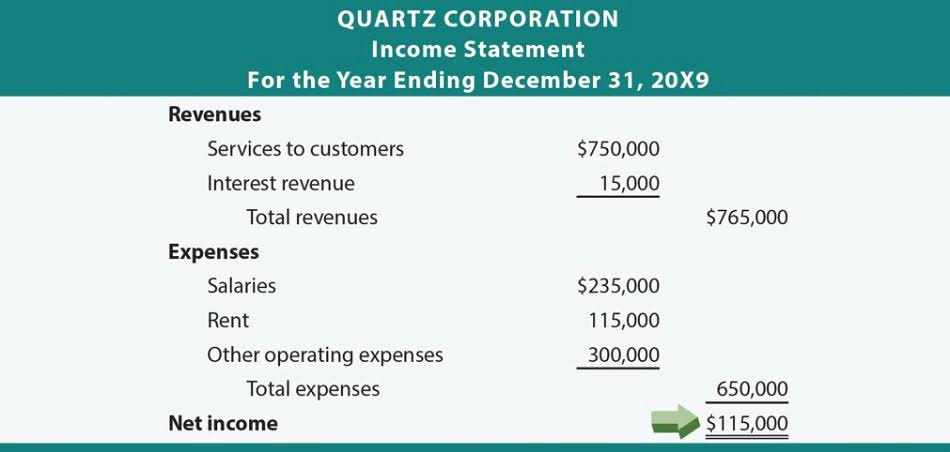
Depreciation is allowable to the business entity for the assets used for business, and on personal investments, no depreciation is allowed as expenses. For example, if the organization’s profit depreciation tax shield formula is $ 500,000 before depreciation and depreciation is $ 200,000, and the applicable tax rate is 20%. They can use this to the advantage of the company since interest is a tax-deductible expense.
- Tax shield for an individual is beneficial when you want to buy a home, using a mortgage or a loan.
- Meanwhile, the company maintains its own depreciation calculations for financial statement reporting, which are more likely to use the straight-line method of depreciation.
- So, if they do it later in the year, they will not be in a position to achieve maximum saving on their taxable income.
- Another qualification is that there must be an approved organization receiving the donations.
- Mortgages originating after that date are eligible for an interest deduction of up to $750,000.
- A tax shield on reduction is the correct organization of assets for saving the tax.
- If your out-of-pocket medical costs were more than 7.5% of your adjusted gross income (AGI) last year, you’ll gain this tax shield.
Note that there is a significant impact when companies add or remove tax shield, therefore, most business owners will always consider their optimal capital structure. This is one of the ways companies manage their tax liabilities and improve cash flows. Depreciation tax shields are important because they can improve a company’s cash flow by reducing its tax liability. They also make capital-intensive investments more attractive because the higher the investment in depreciable assets, the greater the potential tax shield.
Tax Shield for Depreciation
Tax shields allow for taxpayers to make deductions to their taxable income, which reduces their taxable income. The lower the taxable income, the lower the amount of taxes owed to the government, hence, tax savings for the taxpayer. An interest tax shield approach is useful for individuals who want to purchase a house with a mortgage or loan. Also, like depreciation, the interest tax shield approach differs from country to country.
The mitigating factors to your taxable income are known as tax shields. A tax shield is a reduction in taxable income by claiming allowable deductions. A Tax Shield is an allowable deduction from taxable income that results in a reduction of taxes owed. Tax shields differ between countries and are based on what deductions are eligible versus ineligible. The value of these shields depends on the effective tax rate for the corporation or individual (being subject to a higher rate increases the value of the deductions).
Example of a Depreciation Tax Shield
Other factors, such as the length of ownership of the item and whether it was used to construct capital improvements, may impact the potential for depreciation to be deducted. Based on the corporation’s or person’s effective rate, these safeguards are valued. With the two https://www.bookstime.com/ methods clarified, let’s look at the Cash Flow impact of each approach. In the section below, we cover two of the most common methods and their Cash Flow and Valuation impacts. There are a variety of deductions that can shield a company (or Individual) from paying Taxes.
As a result, taxpayers financially benefit when they understand the deductions they qualify for, as it minimizes their tax burden. Both corporations and individuals can use tax shields to save money on their taxes. A depreciation tax shield is a tax reduction technique under which depreciation expense is subtracted from taxable income. The amount by which depreciation shields the taxpayer from income taxes is the applicable tax rate, multiplied by the amount of depreciation. A depreciation tax shield is a tax evaded causing by the deduction of depreciation in assets. We can analyze the taxable income with the assistance of multiplication of tax rate with reduction expense.
Depreciation tax shield formula
However, you can deduct student loan interest whether you itemize or not. The catch is you can only deduct a maximum of $2,500 of student loan interest regardless of your filing status. Ivory Coast, Finland, Japan, Denmark, and Austria are among the top 5 countries with the most income tax, all of them being above 50%. Consider the shield’s $100,000 yearly worth as an example of an interest expense. The Interest Payments are typically tax-deductible, which lowers the Company’s tax bill.

This is because the rating of some deductions, such as depreciation happens throughout the year. So, if they do it later in the year, they will not be in a position to achieve maximum saving on their taxable income. Therefore, expenses related to interest play the role of a shield against tax obligations. In other words, the tax shield protects part of the taxpayers income from being taxed.
This only speeds up the acknowledgment of inferences and does not make larger tax deductions. Now, this can be an issue for growing trade, where its income would move it into greater tax rates. Many businesses hire accelerated depreciation approaches when they have assets they expect to be more fruitful.
- Given that the interest generated from debt is tax-deductible, it makes debt servicing easier for businesses.
- Tax-efficient investment strategies are cornerstones of investing for high net-worth individuals and corporations, whose annual tax bills can be very high.
- If your deductions don’t add up to an amount greater than your standard deduction, you won’t get as large of a return by itemizing.
- You can use the tax shield formula for different deductions, such as the following.
